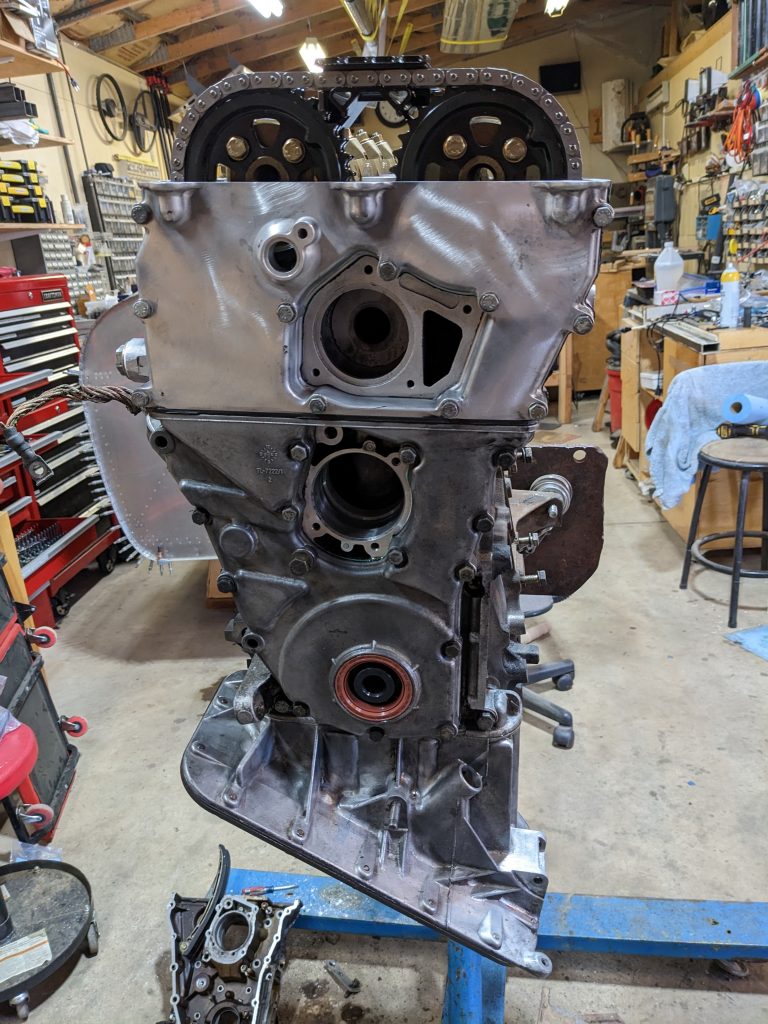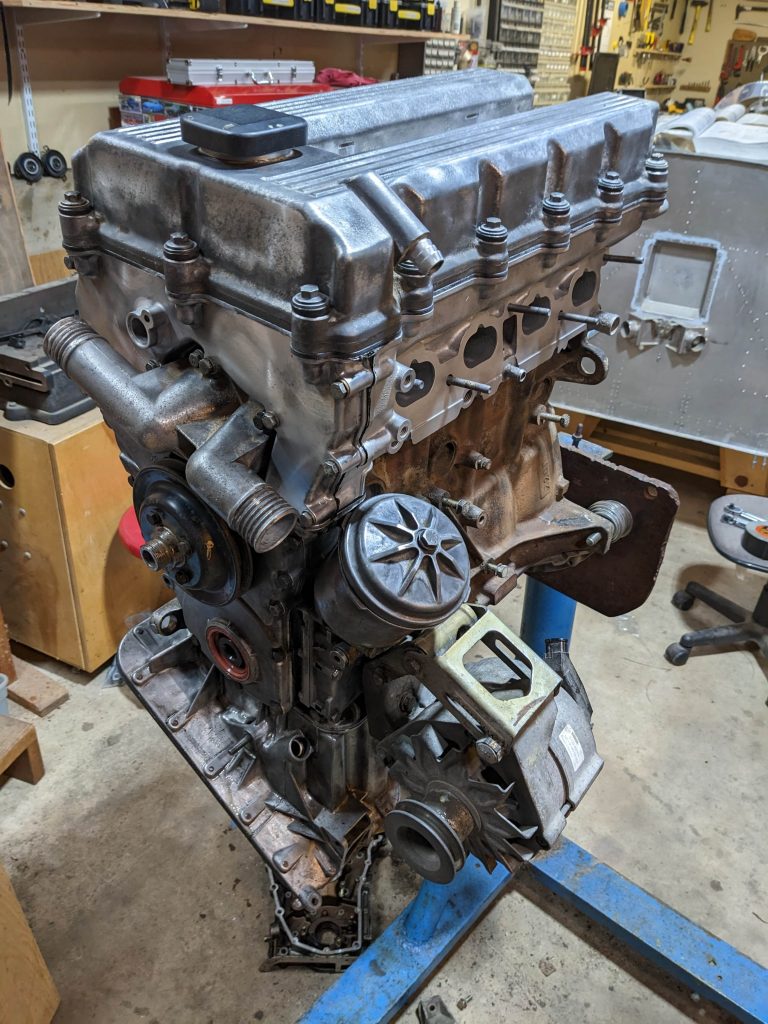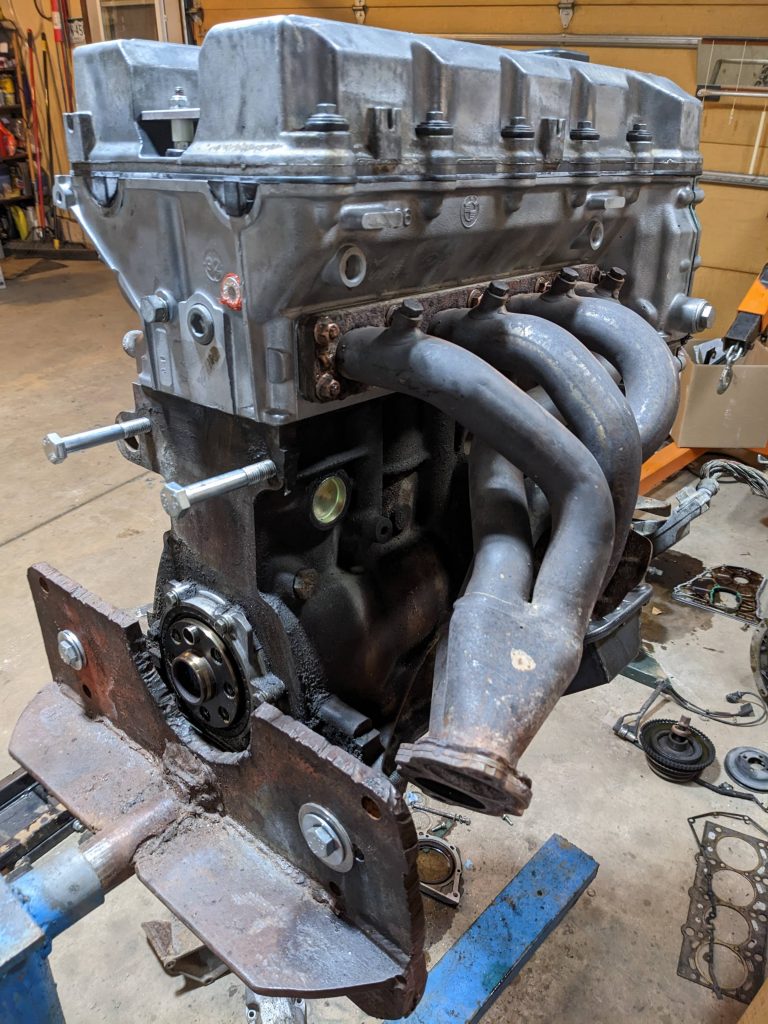
The timing covers on the front were leaking profusely from both engines. As others have mentioned, “they do that.” That’s disappointing and annoying, but I’m not here to solve age-old BMW problems. The engine my car came with managed to completely coat the inside of my skidpan with about 5 miles of driving so, hopefully I can do better than that? The way these timing covers seal with a fiddly “profile” gasket in some places and a super thin paper/composite gasket in others is problematic. I’m normally not one to use RTV on gaskets, but it seems like anything might help here. The replacement M42 came completely coated in RTV squeeze-out as well as oil leaks, so it’s clear that RTV alone doesn’t solve the problem. I used a very thin layer on both sides of the gasket, and a bit more where the rubber profile gaskets join. The inner part of the profile gasket protruded a bit on one side after torquing the head down, so I trimmed it flush with a razer blade. The outer section of the gasket that rides between the timing covers is more problematic. It’s clearly meant to be compressed downward to (1) seal the forward edge of the gasket, and (2) provide a flush surface for the valve cover to mount to. Only, there’s no good way to apply downward tension on it. Worse, the holes in the upper timing cover are oblong, which means that you can line up the holes and bolt it together completely misaligned. I used some vice grips to compress the upper timing cover such that its top surface was level with the valve cover while I torqued down the bolts. I don’t think I’d recommend this technique as it put some ugly gouges in the timing cover, but you won’t be able to see them over the inevitable oil and dirt covering anyway:) The whole thing is a pretty unimpressive maintenance-unfriendly design.
I told myself I wasn’t going to clean any of this stuff up and just stick all back together with the outsides dirt and oil covered as long as the inside was clean, but I just couldn’t help myself and even wire-wheeled the valve cover a little bit. In any case, the engine is mostly reassembled, minus the intake and cooling stuff on this side.

I know how these block heaters are held in place, yet like an idiot, I went ahead and completely removed the bolt on the front before thinking it through. That left the nut and expanding wing bit to drop into the water jacket. And of course they’re stainless, so I couldn’t fish them out with a magnet. I spent an hour and got one piece out by tilting the engine over on the stand. I got the other one out by duct taping a piece of tiny silicone hose to my shop vac, which let me fish it out.

Anyway, shiny freeze plug installed. I also removed the German-tastic studs-welded-to-a-flange thing the exhaust header has going on. I now have 2 of these in my possession, and on both 2/3 studs break loose, but the third stays firm. There is absolutely no reason that these should be studs welded to a flange as bolt heads are perfectly accessible even when this is installed in the car. Fixed.
Leave a Reply